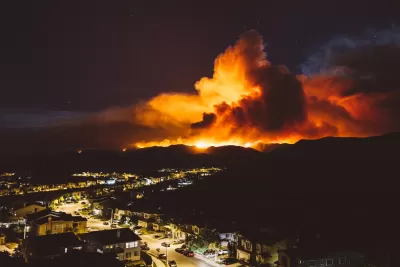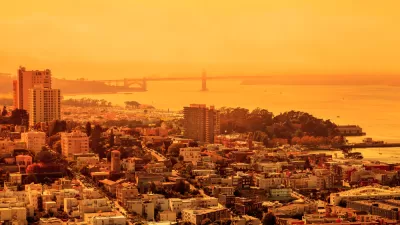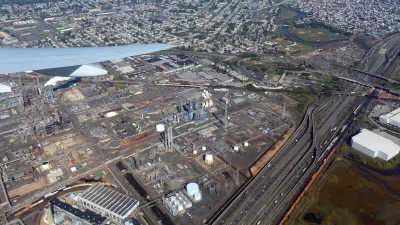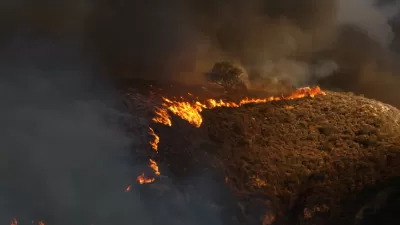More intense and widespread fires caused by climate change and changing air temperature are threatening more existing communities.

In an article for Source NM, Mojtaba Sadegh describes the worsening exposure of Americans to wildfire smoke. In the last two decades, close to 600,000 people were directly exposed to wildfires within 3 miles of their homes.
“Three-quarters of that 125% increase in exposure was due to fires’ increasingly encroaching on existing communities. The total burned area increased only 38%, but the locations of intense fires near towns and cities put lives at risk.” According to Sadegh, “Those statistics reflect how the number of people directly exposed to wildfires more than doubled from 2000 to 2019, my team’s new research shows.”
The analysis found 80 percent of wildfire exposure was, unsurprisingly, in the western states, with 70 percent of Americans exposed to wildfire hazards in California, despite the state only having 15 percent of burned areas.
The team found that, while development in the wildland-urban interface and unchecked growth is part of the problem, it only accounts for a small part of the increase in wildfire exposure. “Instead, three-quarters of this trend was driven by intense fires growing out of control and encroaching on existing communities.”
As the warming trend continues, wildfires will grow more intense and dangerous to existing communities. “Reducing emissions will help slow warming, but the risk is already high. Communities will have to both adapt to more wildfires and take steps to mitigate their impacts.”
FULL STORY: Human exposure to wildfires has more than doubled in two decades

Study: Maui’s Plan to Convert Vacation Rentals to Long-Term Housing Could Cause Nearly $1 Billion Economic Loss
The plan would reduce visitor accommodation by 25,% resulting in 1,900 jobs lost.

North Texas Transit Leaders Tout Benefits of TOD for Growing Region
At a summit focused on transit-oriented development, policymakers discussed how North Texas’ expanded light rail system can serve as a tool for economic growth.

Using Old Oil and Gas Wells for Green Energy Storage
Penn State researchers have found that repurposing abandoned oil and gas wells for geothermal-assisted compressed-air energy storage can boost efficiency, reduce environmental risks, and support clean energy and job transitions.

Santa Barbara Could Build Housing on County Land
County supervisors moved forward a proposal to build workforce housing on two county-owned parcels.

San Mateo Formally Opposes Freeway Project
The city council will send a letter to Caltrans urging the agency to reconsider a plan to expand the 101 through the city of San Mateo.

A Bronx Community Fights to Have its Voice Heard
After organizing and giving input for decades, the community around the Kingsbridge Armory might actually see it redeveloped — and they want to continue to have a say in how it goes.
Urban Design for Planners 1: Software Tools
This six-course series explores essential urban design concepts using open source software and equips planners with the tools they need to participate fully in the urban design process.
Planning for Universal Design
Learn the tools for implementing Universal Design in planning regulations.
Ascent Environmental
Borough of Carlisle
Institute for Housing and Urban Development Studies (IHS)
City of Grandview
Harvard GSD Executive Education
Toledo-Lucas County Plan Commissions
Salt Lake City
NYU Wagner Graduate School of Public Service





























